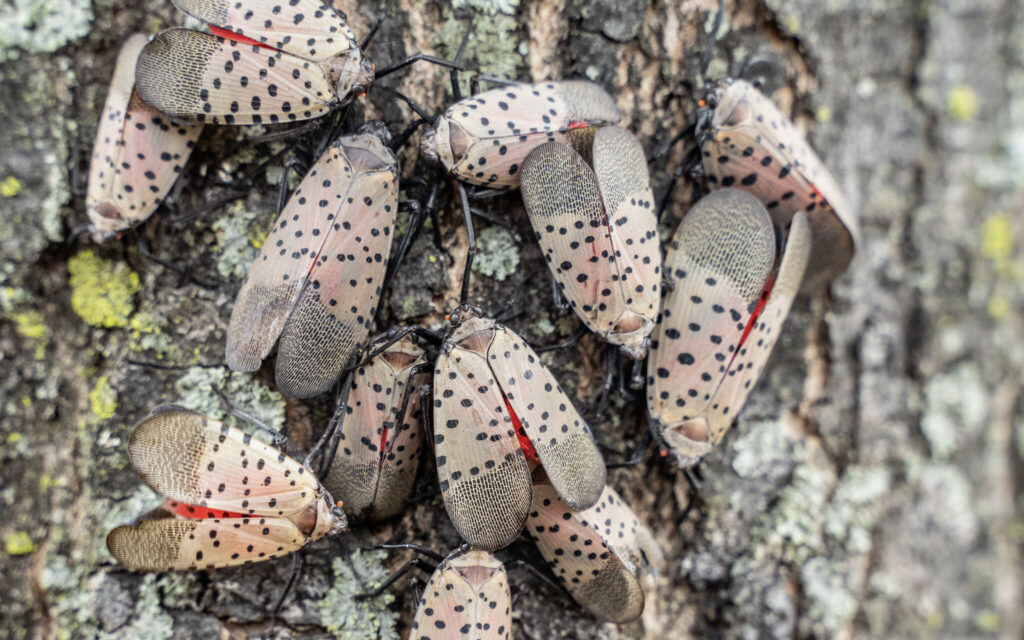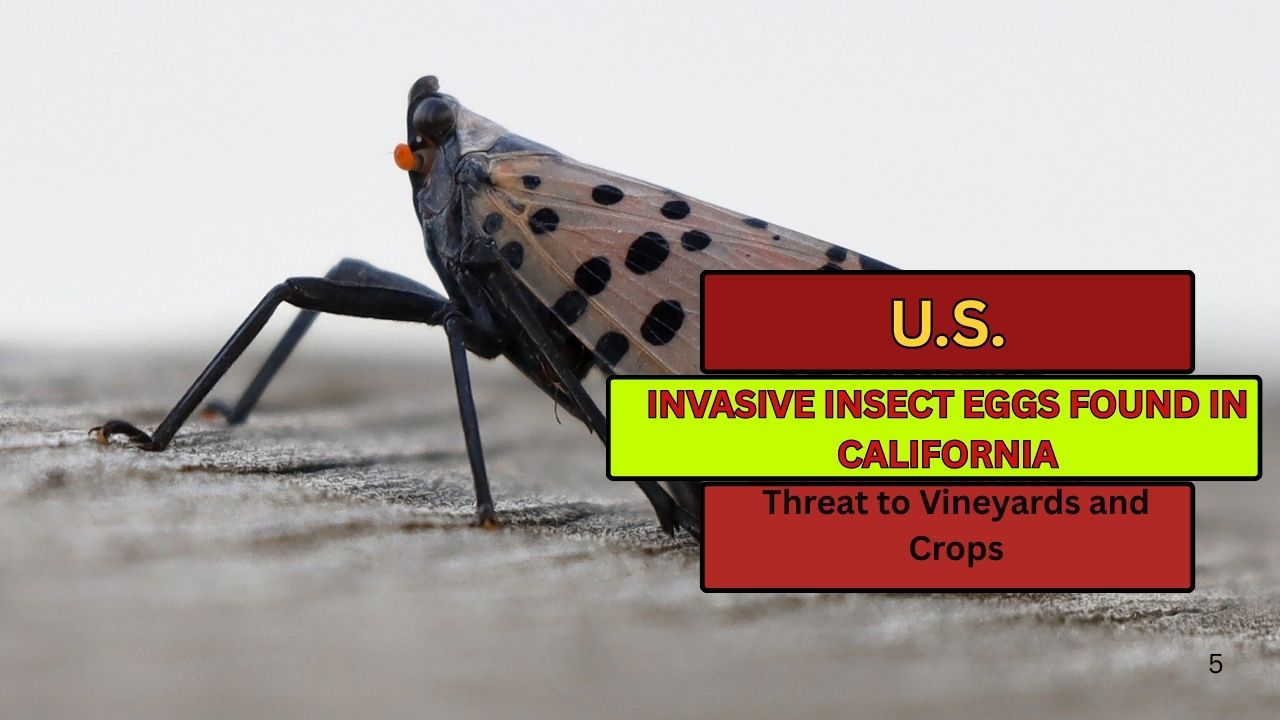California officials are on high alert after the state’s first-ever interception of spotted lanternfly (SLF) egg masses earlier this year. The discovery has raised serious concerns among agriculture experts, who warn that the pest poses a major threat to California’s $40 billion wine industry and a wide range of other crops.
A Troubling Discovery in Sonoma County
In March 2024, California border protection officers at the Truckee inspection station near Lake Tahoe made a critical find. They detected 11 viable SLF egg masses on a 30-foot-tall metal art installation being transported from New York to Sonoma County. Sonoma, located in the heart of California’s wine country, could suffer devastating consequences if the spotted lanternfly were to establish itself.
Officials immediately turned the shipment back to Nevada, where another 30 egg masses were found and removed through power-washing. Only after ensuring the shipment was pest-free was it allowed to re-enter California (source).
Why the Spotted Lanternfly Is a Serious Threat
Native to Asia, the spotted lanternfly (Lycorma delicatula) was first detected in the United States in Pennsylvania in 2014. Since then, it has rapidly spread across the eastern U.S., earning a reputation as a highly invasive “hitchhiker” due to the stealthy way its egg masses cling to vehicles, containers, outdoor furniture, and even plants.
The insect feeds on over 70 plant species, including grapes, apples, walnuts, hops, and hardwood trees (source). SLFs damage plants by piercing the tissues to extract sap. This not only weakens the plant but leaves behind a sugary substance called honeydew, which fosters the growth of mold and further stresses the plants.
Severe infestations can result in reduced crop yields, decreased plant health, and even plant death — a nightmare scenario for California’s prized vineyards (source).
California’s Wine Industry at Risk
The California Association of Winegrape Growers has issued a stern warning about the SLF’s potential impact. With wine grapes being one of California’s most lucrative agricultural products, an SLF outbreak could have devastating economic consequences.
According to estimates, California’s wine industry contributes approximately $40 billion annually to the state’s economy and supports hundreds of thousands of jobs. An infestation could threaten not only vineyards but the broader ecosystem of tourism, exports, and local businesses connected to wine production (California Department of Food and Agriculture).

Preventing an Outbreak
In response to the discovery, California has ramped up inspections at state border checkpoints. Officials are urging residents, travelers, and businesses to stay vigilant by checking vehicles, outdoor equipment, and shipments for egg masses that resemble patches of dried mud.
The California Department of Food and Agriculture (CDFA website) advises that any suspected SLF eggs be carefully scraped off and destroyed. Residents are also encouraged to report any sightings to the CDFA Pest Hotline or local county agricultural offices.
The U.S. Department of Agriculture (USDA SLF Resource) emphasizes that public cooperation is crucial in the effort to prevent the spread of SLF to the West Coast.
How You Can Help
- Inspect: Check your vehicles, trailers, and outdoor furniture for egg masses, especially after visiting eastern states where SLF is already established.
- Destroy: If you find egg masses, scrape them into a bag with hand sanitizer or alcohol and dispose of them.
- Report: Contact the California Department of Food and Agriculture or use online tools to report suspected sightings.
- Educate: Learn how to identify SLF in its various life stages and share this information within your community.
Final Thoughts
While California has so far succeeded in preventing the spread of spotted lanternfly into its borders, the risk remains significant. A single missed egg mass could lead to an outbreak, endangering vital crops and the livelihoods of thousands. Vigilance and community action are key to keeping this invasive pest at bay.
This article has been carefully fact-checked by our editorial team to ensure accuracy and eliminate any misleading information. We are committed to maintaining the highest standards of integrity in our content.

Outside of work, he enjoys playing chess, following cricket, and writing short stories. His commitment to integrity and in-depth analysis strengthens OTE News’ mission of providing trustworthy journalism.




